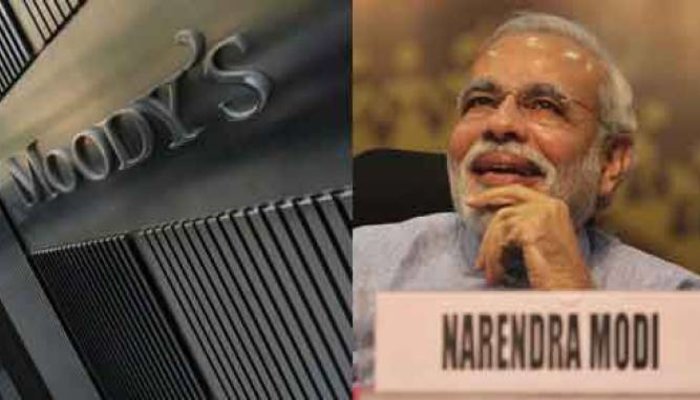
Under Narendra Modi’s rule, many changes have come into place. These changes have had both positive and negative impact on the society. Here is one such positive impact.
Credit rating agency Moody’s Investors Services on Friday upgraded India’s sovereign ratings to Baa2 from its lowest investment grade (Baa3) giving credit to the Narendra Modi government for its “wide-ranging program of economic and institutional reforms”. It has now changed the outlook for India’s rating to stable from positive.
The rating upgrade comes after a gap of 13 years – Moody’s had last upgraded India’s rating to ‘Baa3’ in 2004.
“The decision to upgrade the ratings is underpinned by Moody’s expectation that continued progress on economic and institutional reforms will, over time, enhance India’s high growth potential and its large and stable financing base for government debt, and will likely contribute to a gradual decline in the general government debt burden over the medium term.
In the meantime, while India’s high debt burden remains a constraint on the country’s credit profile, Moody’s believes that the reforms put in place have reduced the risk of a sharp increase in debt, even in potential downside scenarios,” Moody said.
Moody’s has also raised India’s long-term foreign-currency bond ceiling to Baa1 from Baa2, and the long-term foreign-currency bank deposit ceiling to Baa2 from Baa3. The short-term foreign-currency bond ceiling remains unchanged at P-2, and the short-term foreign-currency bank deposit ceiling has been raised to P-2 from P-3. The long-term local currency deposit and bond ceilings remain unchanged at A1. It has also upgraded India’s local currency senior unsecured rating to Baa2 from Baa3 and its short-term local currency rating to P-2 from P-3.
The rating agency, however, warned that India’s rating could be downgraded if its fiscal metrics and the outlook for general government fiscal consolidation deteriorates materially. “The rating could also face downward pressure if the health of the banking system deteriorated significantly or external vulnerability increased sharply,” it said.
The government is mid-way through a wide-ranging program of economic and institutional reforms, it said adding that while a number of important reforms remain at the design phase,
“Moody’s believes that those implemented to date will advance the government’s objective of improving the business climate, enhancing productivity, stimulating foreign and domestic investment, and ultimately fostering strong and sustainable growth. The reform program will thus complement the existing shock -absorbance capacity provided by India’s strong growth potential and improving global competitiveness,” it said.
Key elements of the reform program include the recently-introduced Goods and Services Tax (GST) which will, among other things, promote productivity by removing barriers to interstate trade; improvements to the monetary policy framework; measures to address the overhang of non-performing loans (NPLs) in the banking system; and measures such as demonetization, the Aadhaar system of biometric accounts and targeted delivery of benefits through the Direct Benefit Transfer (DBT) system intended to reduce informality in the economy, it said. Other important measures which have yet to reach fruition include planned land and labor market reforms, which rely to a great extent on cooperation with and between the States, it added.
“Most of these measures will take time for their impact to be seen, and some, such as the GST and demonetization, have undermined growth over the near term,” it said adding that Moody’s expects real GDP growth to moderate to 6.7% in the fiscal year ending in March 2018 (FY2017).
However, as disruption fades, assisted by recent government measures to support SMEs and exporters with GST compliance, real GDP growth will rise to 7.5% in FY2018, with similarly robust levels of growth from FY2019 onward, it said.
Longer term, India’s growth potential is significantly higher than most other Baa-rated sovereigns, it added.

Post Your Comments